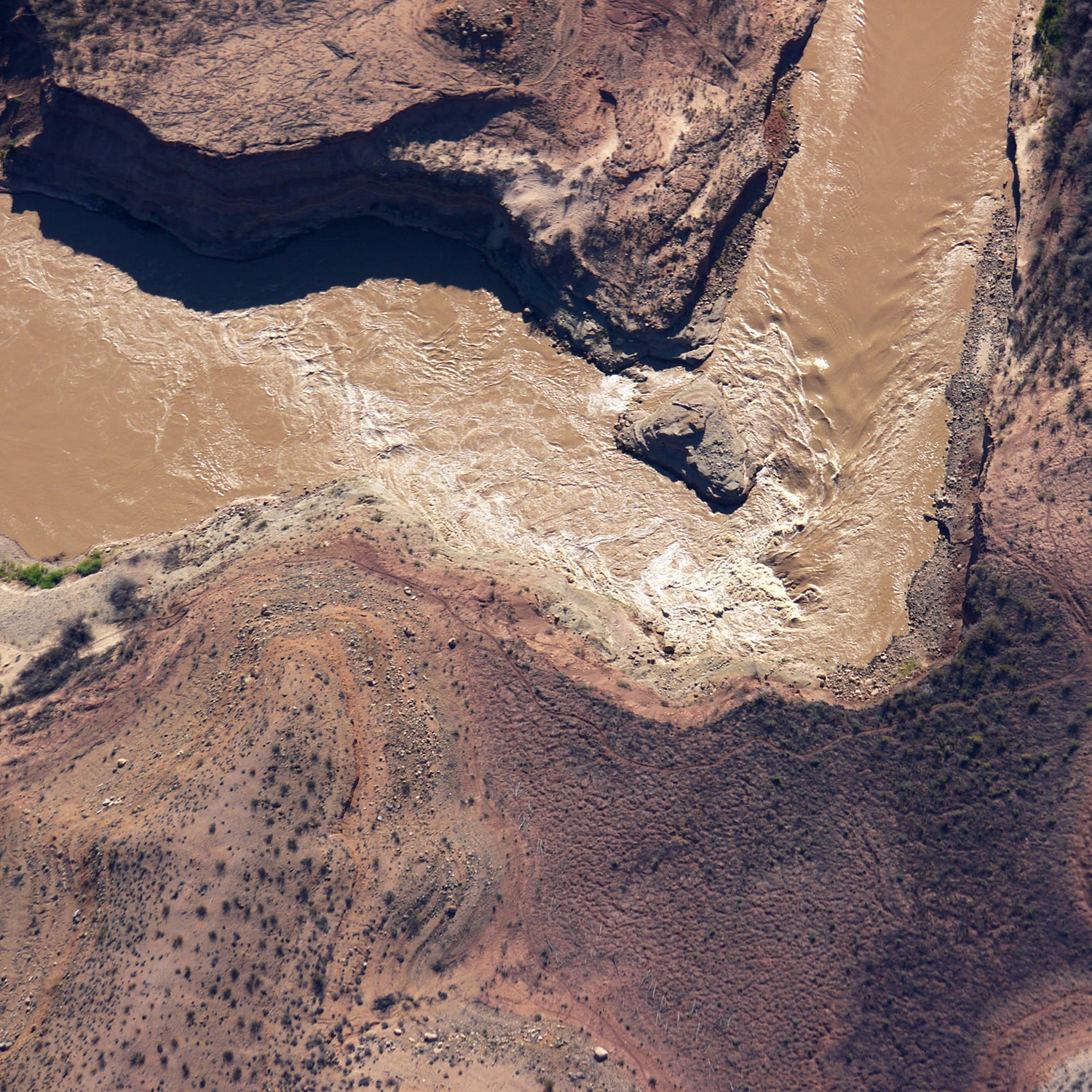If you floated the Colorado River through the Grand Canyon any time since the construction of the Hoover Dam 80 years ago, chances are you paddled along the 300-mile stretch from Lees Ferry to Lake Mead. But the West’s current unprecedented drought has now made such a trip all but impossible. Where a finger of Lake Mead near the Grand Canyon has receded, the Colorado has been reborn, and it has spawned whitewater rapids too treacherous for rafters to run.
“I’ve seen these rapids grow over just the past ten-to-15 years,” says Tom Martin, the founder of who co-wrote . “This is geology in action.”
One of the new rapids, known as Pearce Ferry Rapid, is a rugged, impassable Class VI, and is just downstream from Pearce Ferry, near where the Grand Canyon ends. When Lake Mead had not yet receded to its current levels, the waters where the rapid now exists were relatively less turbulent because they made up a reservoir, not a fast-flowing river. This allowed fine sediment like silt to deposit en masse. But as the drought has driven the lake ever lower over the past 15 years, the reemerging river is coursing over the silt, and in some areas the river is following a different path than it did before the reservoir existed.
The Colorado in this region winds to and fro over the landscape and, over time, can erode its banks and change its course, or meander. At places like Pearce Ferry, the river is meandering on top of the recently deposited, easily eroded Lake Mead silt. As the river meanders along its new path, it is falling over hard rock outcrops—like sandstone or limestone—and creating what’s called a knickpoint rapid, says Bill Cross, co-author of the rafting guide . Knickpoints can often form waterfalls (Niagara Falls is one famous, albeit large, example) that can be lethal to rafters, and, in the case of Pearce Ferry Rapid, the waters are not safe to navigate, even by motorboat, Martin says.
The Pearce Ferry Rapid, on top of creating problems for rafters wanting to complete an entire Grand Canyon river trip, have also caused headaches for the National Park Service. After the drawdown of Lake Mead, rafters were, until 2010, forced to take out upstream at Diamond Creek, which is just above the official end of the canyon trip near Pearce Ferry. This eventually spurred the NPS to spend about $1,000,000 to extend Pearce Ferry Road to the river so boaters could finish the whole trip.
“Back in 2000, the take-out at Pearce Ferry was in the reservoir,” Martin says. “The trouble, then, was that they had to build the road out over the reservoir sediments,” which means the road, built on loose earth, requires high levels of maintenance. Once the road was finished, this allowed boaters to raft all the way to the Grand Wash Cliffs, which mark the official end of a Grand Canyon river trip, and which is where rafters can take out at the newly extended road at Pearce Ferry. If rafters want to continue their trip to Lake Mead, they must take their boats out at Pearce Ferry and drive several miles to South Cove in order to bypass the rapids.
The road extension is only a short-term solution to the problem, Martin says. “The Pearce Ferry knickpoint appeared where there was the opportunity to build a very expensive road around it,” Martin says. “But this is a very dynamic system, and if a knickpoint were to appear upstream of Pearce Ferry take-out ramp,” there may not be anywhere another road extension could be built, especially within the Grand Canyon itself where the only take-out options are hiking, mule or helicopter.
Moreover, Martin says, “this is a fascinating example of how we recreate in a time of drought, where the river is trying to deal with a shrinking reservoir.” His advice to rafters: “Don’t miss the take-out” at Pearce Ferry. “Otherwise, it’s not going to be pretty.”


